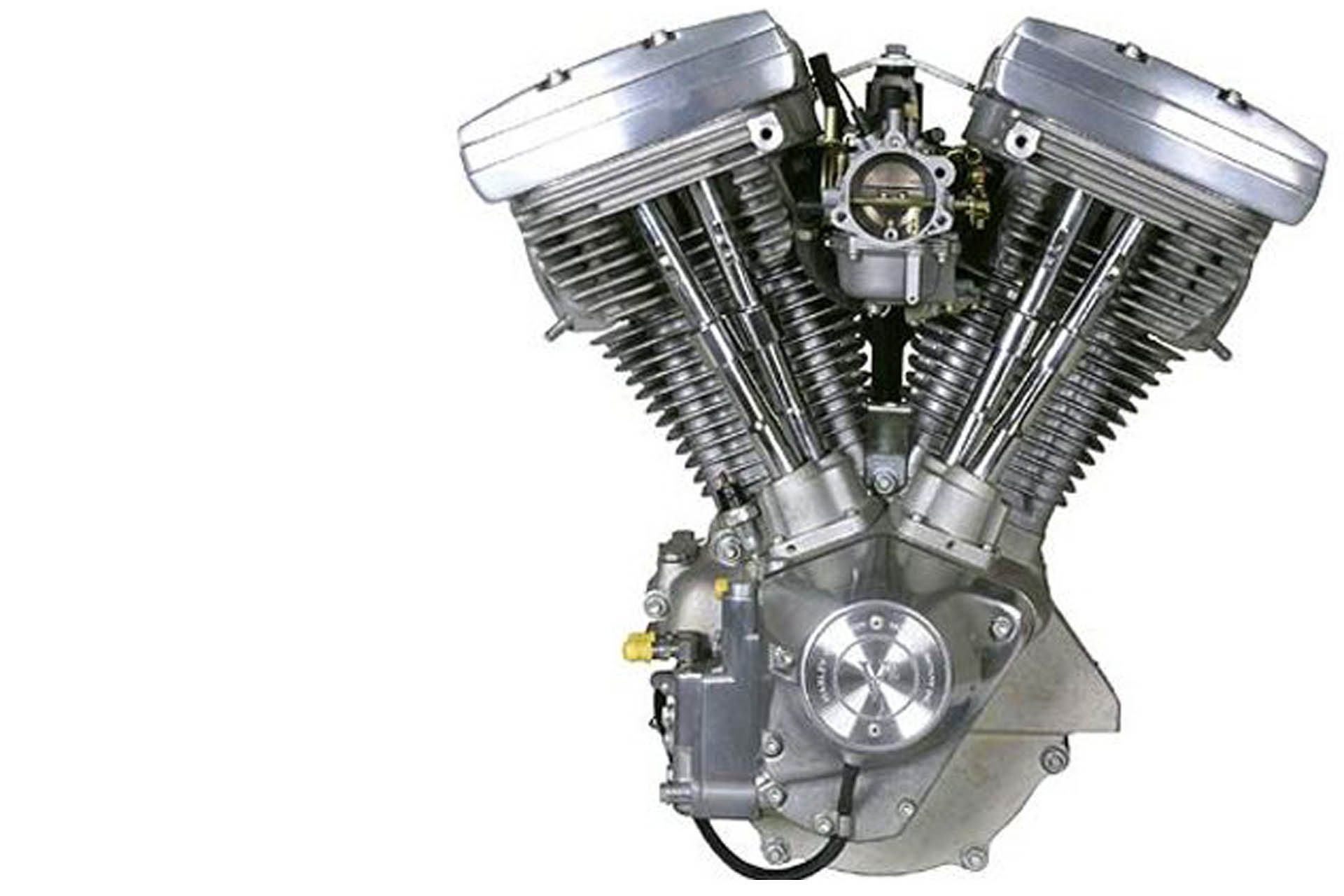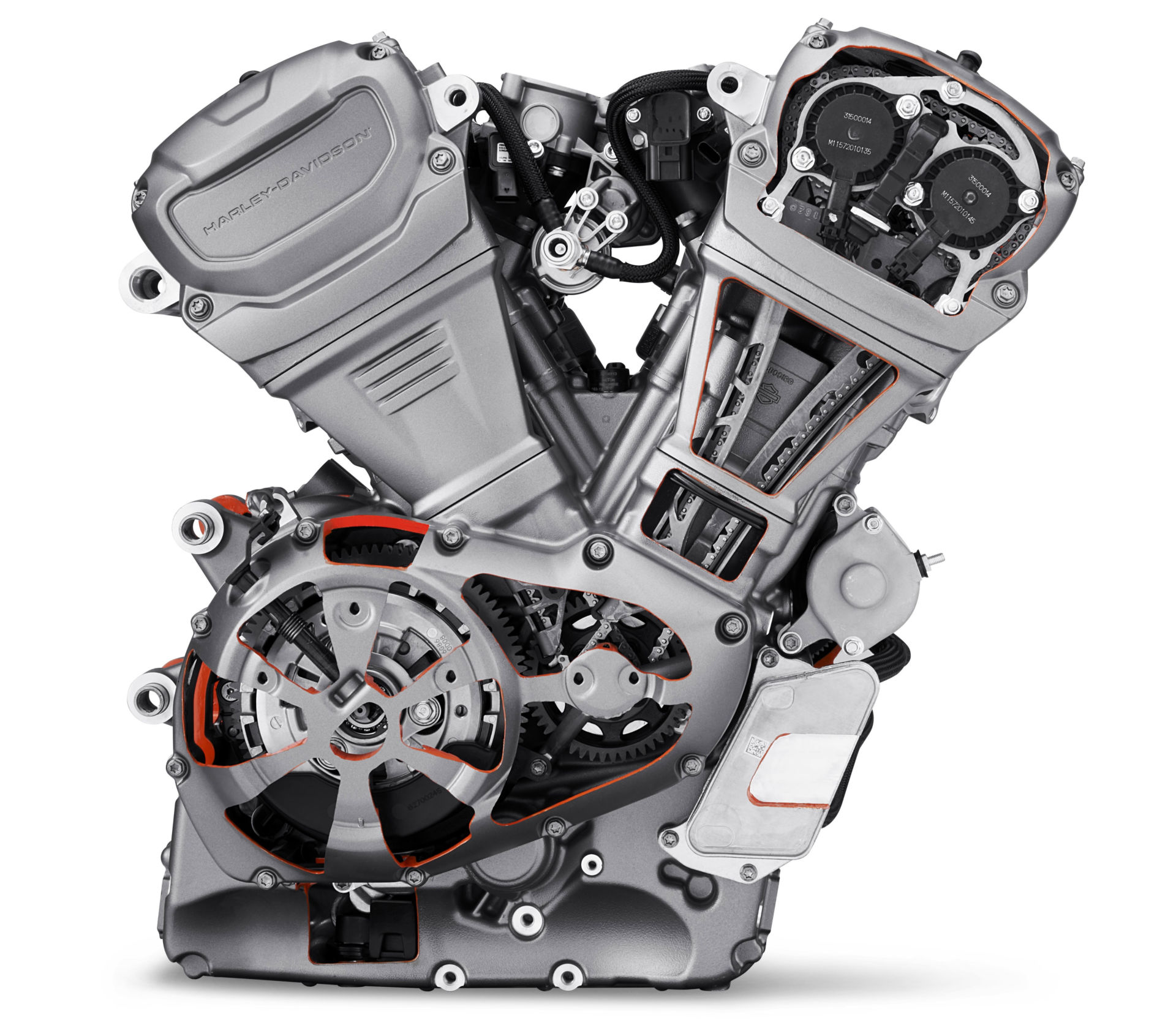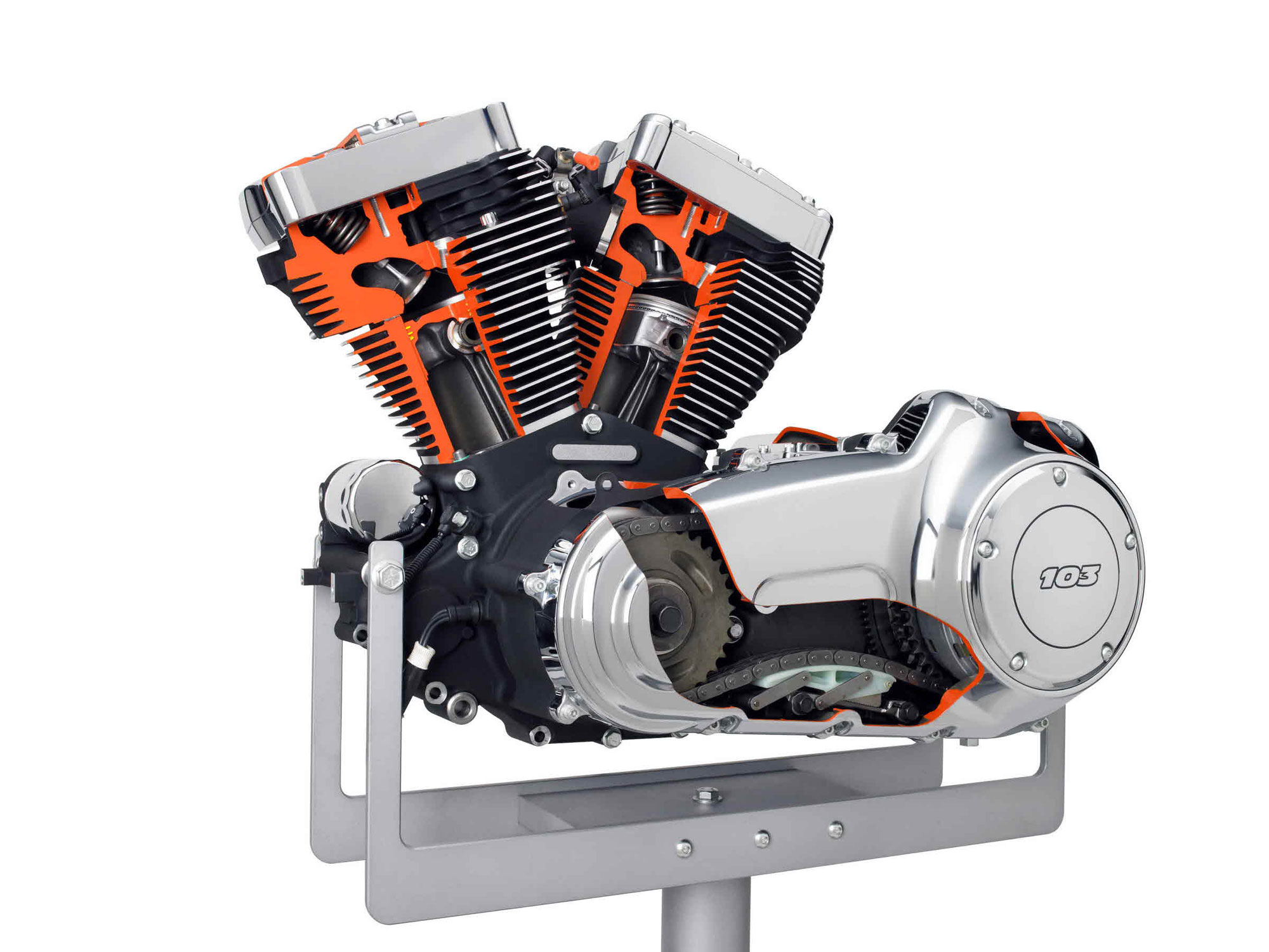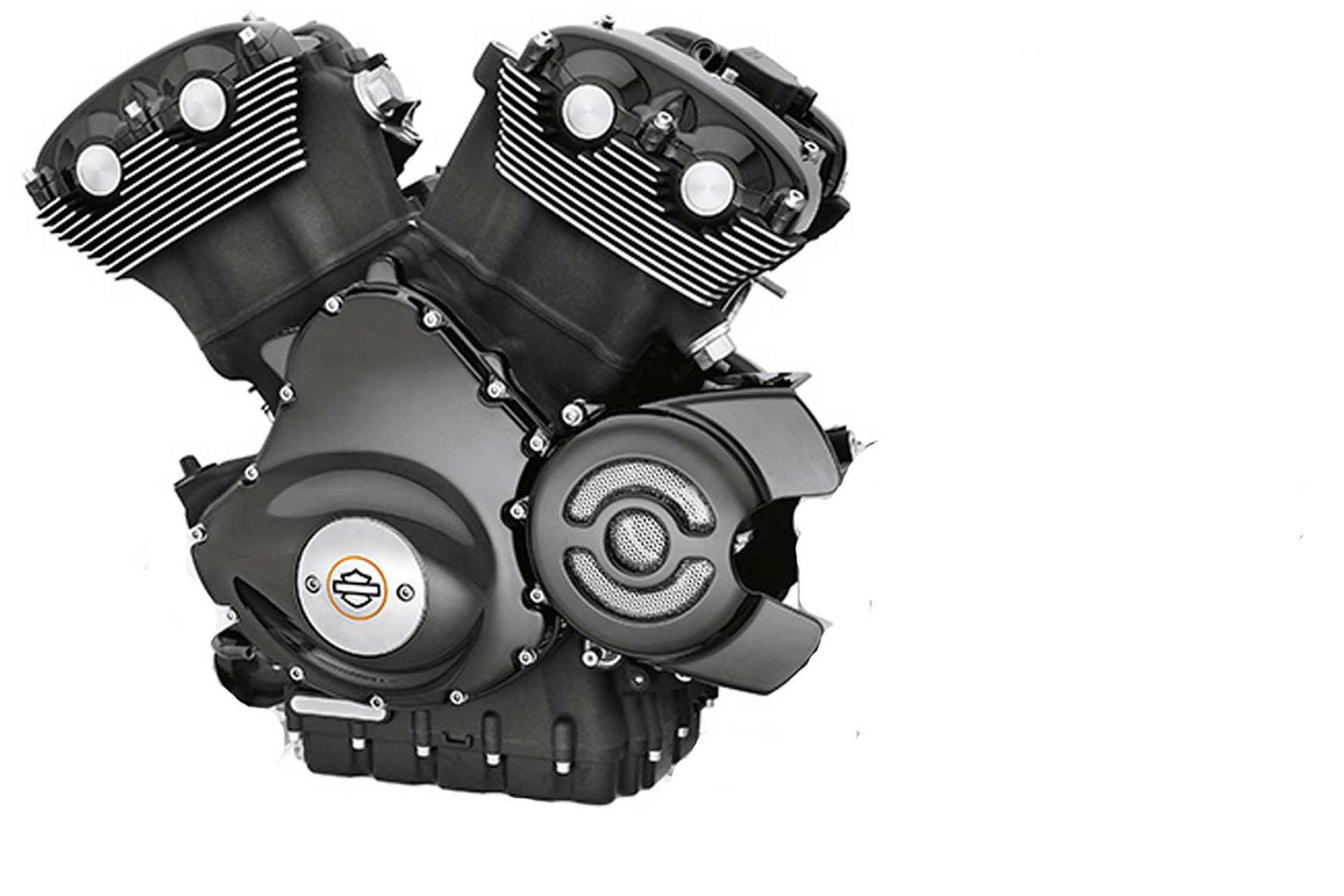Harley Davidson Engine V Angle

Of torque with a peak rpm of 9500 and a 131 compression ratio.
Harley davidson engine v angle. Optimized Design for Light Weight. The pins are 180 degrees apart from one another. The 810cm³ and 7 PS strong V-Twin engines are only produced in a small series of 27 pieces.
William Harleys new V-twin engine was effectively two 440cc singles joined together on a common crankshaft creating an 880cc engine with almost double the power at 7hp. Liquid-cooled Harley-Davidson engine to see mass-market production. Harley V-twins have an angle of 45 degrees between the cylinders which creates lots of vibration but allows for better smoothness of power delivery and ease of packaging.
The crankshaft has a single pin and both pistons are connected to this pin through their connecting rods. With 131 cubic-inch 2147cc its a combination that produces 131 ft-lb of torque and 121 horsepower. The difference in the Harley engine is that the crankshaft has only one pin and both pistons connect to it.
Almost all V8s have a 90 degree angle between the cylinders which almost completely eliminates vibration with the proper counterweights. The two-cylinder engine with a 45 cylinder angle is designed by Harley-Davidson to achieve more power than the current single-cylinders. The V-Twin features a 1250cc displacement with a bore and stroke of 413 105mm x 283 72mm and is capable of 150 horsepower and 94 ft-lbs.
The cylinders were placed at a 60-degree angle rather than the 45 degrees that. The engines have overhead valves that are activated by camshafts in the crankcase. So we tried to locate some great harley davidson v twin engine.
A Harley engine has two pistons. The engine was moderately successful but the use of the vacuum actuated atmospheric inlet valves limited the engines ability to rev at higher speeds. Actually we have been noticed that harley davidson v twin engine diagram is being one of the most popular issue right now.



















